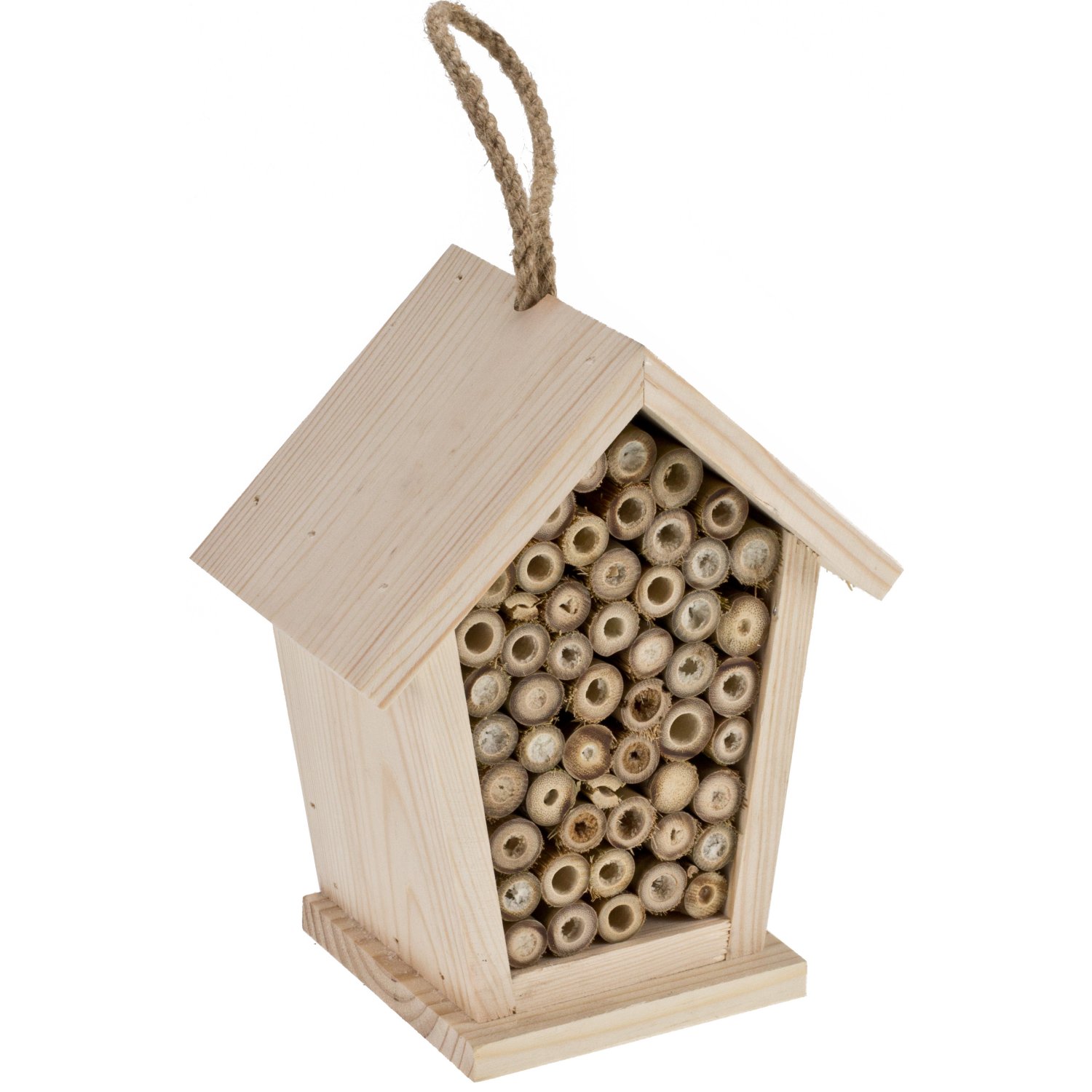Give native wild bees a protective home.
Nesting aid for wild bees
Whoever sets up a wild bee hotel in their garden makes an important contribution to nature conservation. In Germany, wild bees are among the most protected insects. Many of the species native to our country are now on the Red List of endangered species. Wild bees and other Hymenoptera build their nests in cavities in old plant stems, dry stone walls or dead wood, but also in abandoned snail shells and in the ground. However, natural nesting sites are becoming increasingly rare. Therefore, the insects sometimes have great problems finding a suitable place for their nest. It therefore seems all the more important not only to preserve existing habitats, but also to create new ones.
Where should you place a wild bee house?
A wild bee house stays outdoors all year round, as the insects use it not only for nesting but also partly as a safe shelter. The right location is sunny, warm and sheltered. The front ideally faces southeast. The location of the nesting aid should be protected from rain. It should be placed at least one metre above the ground to protect it from splashing water. The bamboo tubes are readily accepted by wild bees as a nesting site. Ideally, place the wild bee house near many native wild flowers. Particularly valuable are willows, bluebells, viper's bugloss, thistles, mallows, knapweeds, borage, phacelia, asparagus, meadow sage and many more.
The nesting aid for wild bees in detail:
Nesting aid made of spruce and bamboo
Size: 19x10x10cm
untreated spruce wood
without wood preservatives
Made in the EU
Provide a habitat for insects !
This wild bee nesting aid provides a home for a variety of wild bee species. The nesting aid is filled with bamboo tubes in different diameters. The nesting tubes have different inner diameters of approx. 8 to 15 mm. The enclosure and the back wall of the nesting aid are made of solid wood. The nesting aid has a practical hanging loop.

